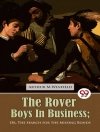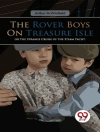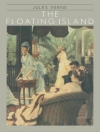F. Scott Fitzgerald’s ‘Presumption’ presents a fascinating critique of the American Dream, rendered through his characteristic blend of rich prose and sharp social commentary. This early theatrical work, written in 1922, employs elements of comedy and satire to explore themes of ambition, class disparity, and the dichotomy between illusion and reality. Set against the backdrop of the Jazz Age, Fitzgerald’s insightful dialogue and intricate characterizations reflect the burgeoning societal changes of the era, ultimately exposing the hollowness often underlying the pursuit of success. Fitzgerald, an iconic figure of American literature, is renowned for his vivid portrayals of the Roaring Twenties, yet his lesser-known works, such as ‘Presumption, ‘ unveil his versatility and deep engagement with contemporary social issues. Growing up in a privileged yet unstable environment, he was acutely aware of the complexities of wealth and aspiration. This awareness undoubtedly influenced his foray into drama, making ‘Presumption’ not only a reflection of his literary prowess but also a personal commentary on the aspirations that shape human experience. This compelling play is highly recommended for readers interested in early 20th-century American literature and the exploration of social themes that resonate even today. Fitzgerald’s intricate portrayal of human ambition and the societal pressures surrounding it will challenge readers to reflect on their own aspirations, offering both entertainment and deep intellectual engagement.
Giới thiệu về tác giả
Francis Scott Key Fitzgerald (1896-1940) was a preeminent figure in American literature, celebrated for his keen insight into the psyche of his generation and his eloquent portrayal of the Jazz Age—a term he is credited with coining. Born in St. Paul, Minnesota, Fitzgerald rose to prominence with the publication of his first novel, ‘This Side of Paradise’ (1920), which became an instant classic among the young readers of his time. His subsequent novels, including ‘The Great Gatsby’ (1925), ‘Tender is the Night’ (1934), and ‘The Last Tycoon’ (published posthumously in 1941), painted vivid pictures of the wealth, excess, and disillusionment that marked the Roaring Twenties.












